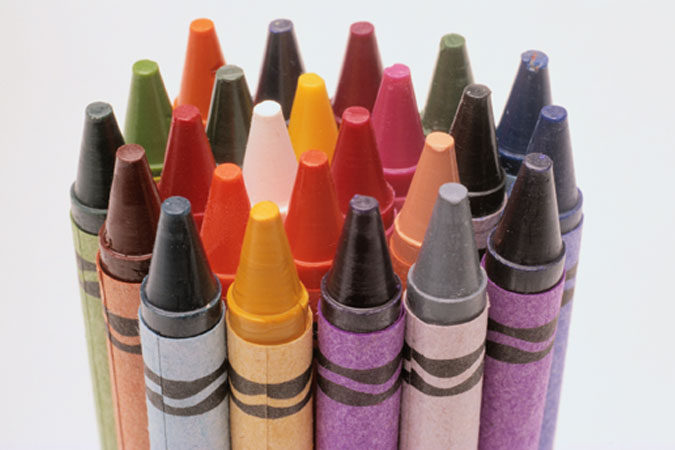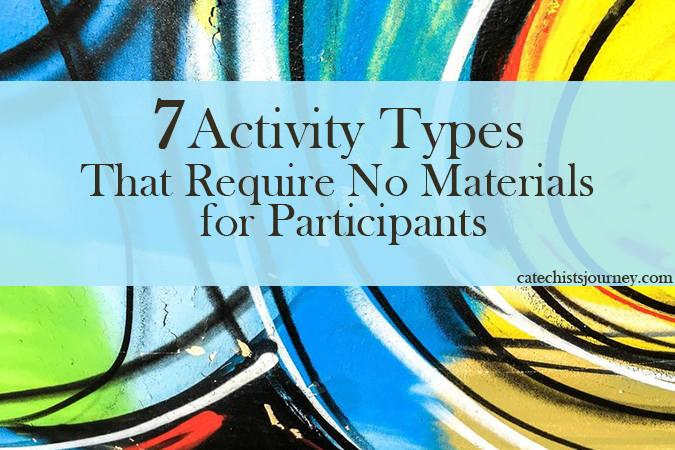
Another catechist had a coloring page he recommended—“except for the older kids, of course.” I, as the seventh-grade catechist, took the page anyway. While I never want to bore or insult the young people with an activity that is too young for them, I have found coloring pages to be useful activities from time to time.
- A simple outline to color can help make a point in a learning station, such as an image of grapes as a symbol of the Eucharist or an image of Mary the young people can embellish in honor of a favorite representation of Our Lady.
- A holiday card can be a simple, in-class service project. To save time and help those who might feel drawing is a challenge, I’ve used sheets with Thanksgiving or Christmas images pre-printed on the card cover. The young people color the image and then share well-wishes, seasonal jokes, or appropriate Scripture verses on the inside of the card.
- A handout with an image related to the session can be something the young people color while we have a discussion about some aspect of the day’s theme. Sometimes young people are more open to sharing while they are occupied doing another task, so it doesn’t feel like the spotlight is on them but a more natural conversation. This tactic isn’t always successful, but it’s worth trying from time to time to see how a particular class responds.
- A color-by-number image or another sheet with a hidden picture can be a good session opener. I’ve used this technique at the beginning of my first session after Easter, and even though the young people can tell quickly what the image will be, it’s an easy-going introductory activity to do as the group gathers after break and we chat about Easter celebrations with family.
- More complex images can be used to illustrate points such as the symbolism in a stained-glass window or give the young people a creative outlet for expression in a way that many will enjoy.
Many of my students through the years have asked for coloring activities. Whether they are a form of creative expression, a memory aide, or a stress reliever, coloring activities can be beneficial ways to convey our faith and highlight, in a subtle way, that beauty has importance in our faith.
How have you used coloring sheets in meaningful ways in your class?
Find coloring pages and other activities that accompany Shhh…God Is in the Silence at the book’s website here.





We have incorporated coloring and other art activities across all grade levels in our K-10 program. Even the Confirmation students (grades 9-10) appreciate something that is simple yet creative and also is a great stress-reducer! On a session about the Bible, we had “illuminated” Bible verse pages for them, and it was quite popular.
Laura, thanks for sharing your experience. “Illuminated” Bible verse pages sound like a great idea!
You’re never too old to color. I led a prayer workshop earlier this year, and one of the activities was a “praying in color” session. I didn’t appreciate how engaged the participants would be. They were really into it, and my takeaways were 1) they appreciated the opportunity to do something they wouldn’t ordinarily do and 2) I should have allotted more time.
I think giving your hands something to do allows your mind to focus in a different way. Once, while my first-graders were working on a coloring activity, I overheard them having a thoughtful conversation about whether Jesus “wanted” to be crucified. They didn’t need my intervention; they were just working and thinking and talking to one another.
Kathleen, thanks for sharing your experience of how coloring at any age can open us up to thoughtful conversations.